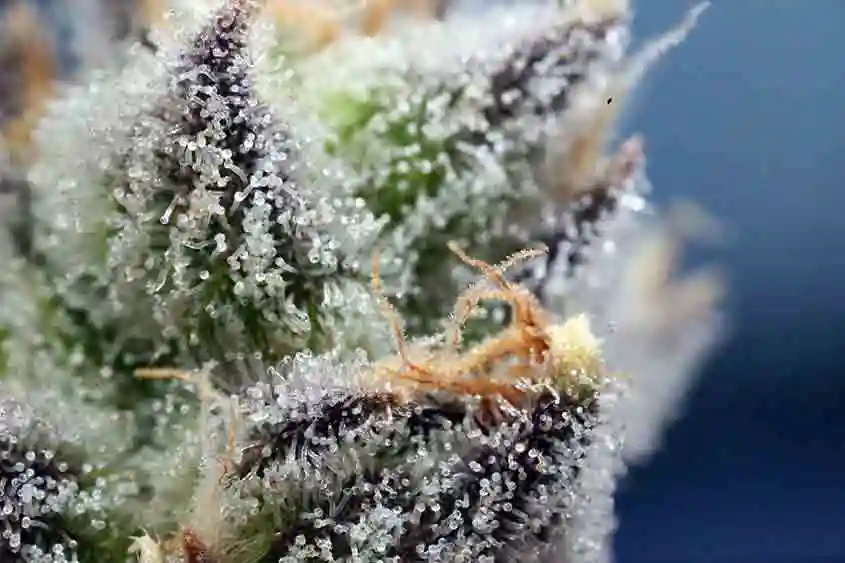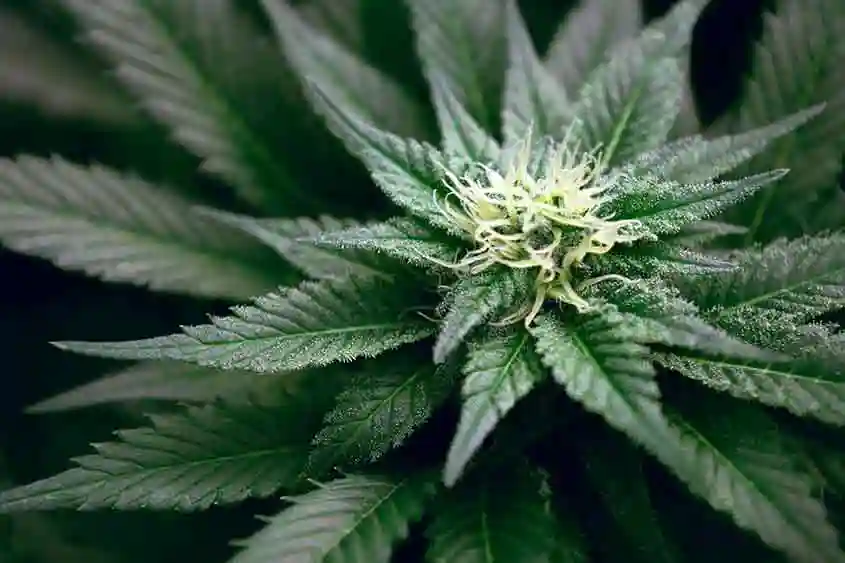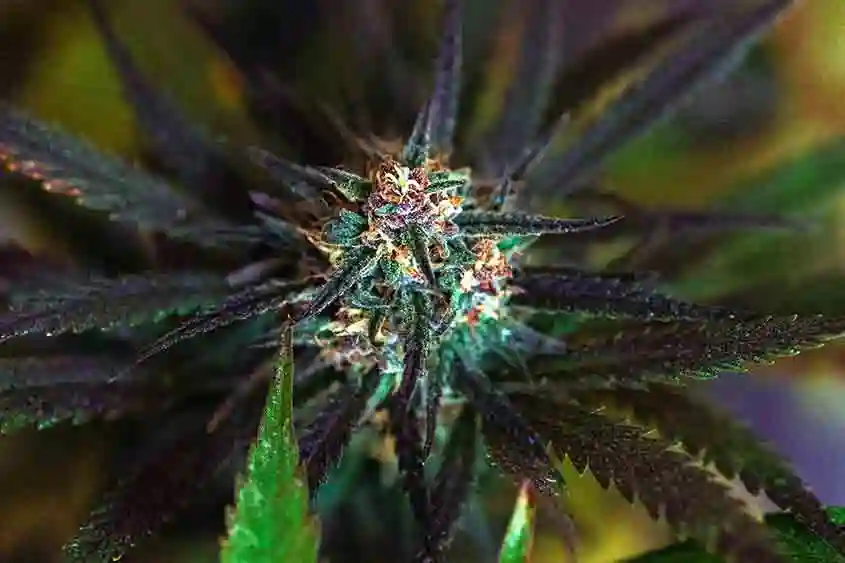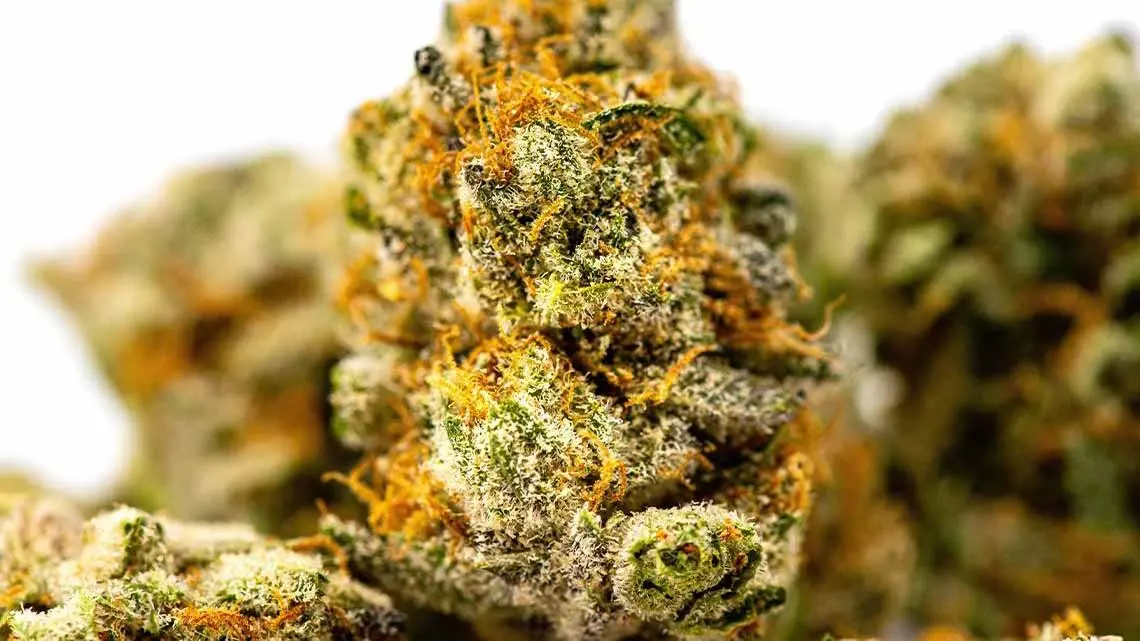Trichomes are those remarkable, tiny, sparkling crystals that adorn cannabis plants. They wield a profound influence over the characteristics and effects of marijuana. In this comprehensive blog, we embark on a journey into the captivating world of trichomes. We will look into their many functions, diverse types, intricate production processes, and intriguing lifecycle stages. Join us as we uncover the secrets behind these microscopic structures that contribute immensely to the potency, aroma, and therapeutic properties of cannabis.
Through this exploration, you’ll understand how trichomes protect the plant, produce valuable compounds, and influence the consumer experience. Are you a curious enthusiast, a cultivator aiming to optimize yield, or a consumer seeking to enhance cannabis knowledge? This blog will illuminate the role of trichomes in shaping the complex ecosystem of cannabis cultivation and consumption. Let’s dive in and unravel the mysteries of trichomes together.
The Function of Trichomes on Cannabis
Trichomes, though not unique to cannabis, play a crucial role in protecting the plant from various threats and environmental challenges. Let’s explore the multifaceted functions of trichomes in cannabis:
Defense Against Pests and Pathogens
Trichomes serve as a defense mechanism, shielding cannabis plants from harm caused by animals, insects, pathogens, and environmental stressors. Female cannabis plants (especially during the bud-producing phase) benefit significantly from trichomes. They provide protection against pests such as ants, moths, mites, and caterpillars. The presence of trichomes acts as a physical barrier, making it difficult for pests to reach and damage the plant’s tissues.
Deterrence with Bitter Taste
Trichomes contribute to the plant’s defense by imparting a bitter taste, which deters animals and insects from consuming the cannabis plant. This natural deterrent reduces the risk of herbivory and predation, ensuring the plant’s survival and growth.

UV Protection and Humidity Regulation
In addition to physical protection, trichomes play a vital role in shielding the plant from harmful UV rays. By absorbing and reflecting UV light, trichomes protect the underlying plant tissues from potential damage, such as sunburn and oxidative stress.
Moreover, trichomes help regulate humidity on the leaf surface, preventing excessive water loss and dehydration. This regulation is essential for maintaining optimal physiological functions and overall plant health, especially in arid conditions.
Production of Phytochemicals
One of the most fascinating functions of trichomes is their role in producing cannabinoids, terpenes, and flavonoids. These are key compounds responsible for the scent, flavor, and therapeutic properties of cannabis. Trichomes contain specialized cells that synthesize and store these phytochemicals. As a result, they contribute to the unique characteristics and medicinal effects of different cannabis strains.
In summary, trichomes on cannabis plants serve as a comprehensive defense system, protecting against pests, pathogens, and environmental stressors. Also, they contribute to the synthesis of valuable phytochemicals. Understanding trichomes enhances our appreciation for the intricate adaptations of cannabis and its ability to thrive in diverse ecological settings.
The Different Types of Trichomes in Cannabis
There are three main types of trichomes found on cannabis plants:
Bulbous Trichomes
Bulbous trichomes are the smallest type of trichomes, typically invisible to the naked eye, and require a microscope for observation. These trichomes are densely distributed across the entire surface of the cannabis plant, including leaves, stems, and flowers. Despite their small size, they play a crucial role in giving cannabis flowers their characteristic sparkle and stickiness. Bulbous trichomes contain glandular cells that produce resin, although their capacity for cannabinoid production is limited due to their microscopic nature. They contribute to the plant’s defense against pests and environmental stressors, albeit to a lesser extent compared to larger trichomes.
Capitate-sessile Trichomes
Capitate-sessile trichomes are also microscopic and primarily located underneath the sugar and fan leaves of the cannabis plant. These trichomes have a distinctive mushroom-like structure, with a round head attached directly to the plant surface. Despite their small size, capitate-sessile trichomes are potent producers of cannabinoids and terpenes. They significantly contribute to the overall potency and medicinal properties of cannabis flowers. The presence of capitate-sessile trichomes beneath the leaves enhances the plant’s ability to synthesize valuable compounds throughout its growth cycle.

Capitate-stalked Trichomes
Capitate-stalked trichomes are the largest and most visible type of trichomes, primarily found on the surface of mature cannabis flowers. These trichomes have a prominent structure characterized by a large stalk and bulbous head. The bulbous head of capitate-stalked trichomes is the primary site of cannabinoid and terpene biosynthesis within cannabis plants. These trichomes produce a high concentration of cannabinoids, including THC and CBD. Understandably, they contribute significantly to the psychoactive and therapeutic effects of cannabis. The abundance of capitate-stalked trichomes on cannabis flowers gives them a frosty or crystalline appearance, indicative of their high cannabinoid content.
Understanding the distinct characteristics and functions of each type of trichome is essential to understand cannabis biology. They help us comprehen the factors influencing its potency and medicinal properties. Trichomes play a pivotal role in protecting the plant from environmental stressors. At the same time, they are also the primary site for the production of valuable bioactive compounds. All in all, trichomes play a large role in diverse effects of cannabis on human health and well-being.
The Role of Trichomes in Cannabis Breeding and Cultivation
In this section, we explore how trichomes influence cannabis breeding and cultivation practices.
Trichomes as Indicators of Plant Maturity
Trichomes play a crucial role in determining the optimal harvest time for cannabis plants. By closely monitoring trichome development and maturation, cultivators can identify the peak cannabinoid production stage. This precision in timing ensures that harvested cannabis flowers exhibit maximum potency and desired chemical profiles.

Selection for Desired Traits
Cannabis breeders often use trichome characteristics as selection criteria when developing new cultivars or strains. Trichome density, size, and glandular structure influence the overall quality and potency of cannabis flowers. Breeders strategically cross plants with desirable trichome traits to enhance specific cannabinoid and terpene profiles in offspring.
Impact on Cannabis Quality and Market Value
Trichome-rich cannabis flowers are highly valued in the market due to their potent effects and distinct aroma/flavor profiles. The presence of abundant and mature trichomes indicates premium quality and superior genetics, influencing consumer preferences and market demand. Cultivators prioritize trichome development to produce high-quality cannabis with exceptional potency and therapeutic potential.
Techniques to Enhance Trichome Production
Growers employ various techniques to optimize trichome production during cannabis cultivation. These techniques include controlling environmental factors (such as light, temperature, and humidity), utilizing specific nutrients and supplements, and implementing stress-inducing methods (such as low temperatures or gentle physical agitation). By enhancing trichome development, cultivators can elevate the overall quality and market appeal of their cannabis products.
Future Trends and Innovations
The study of trichomes continues to evolve, with ongoing research focusing on understanding their biochemical pathways and regulatory mechanisms. Future innovations may leverage this knowledge to develop novel cultivation methods or genetic interventions. All in all, growers aim to enhance trichome production and cannabinoid synthesis in cannabis plants.
Trichome Production and Lifecycle
Trichomes undergo a fascinating process of development and maturation during the cannabis plant’s lifecycle, primarily occurring during the flowering stage. Let’s explore the production and lifecycle of trichomes with detailed subheadings:
Initiation of Trichome Development
Trichomes begin to appear on cannabis plants as they transition into the flowering stage. Typically, this occurs towards the end of the plant’s lifecycle. The initiation of trichome development is influenced by hormonal changes and environmental cues. The appearance of trichomes signals the plant’s shift from vegetative growth to reproductive growth.

Location on Different Plant Parts
During the flowering stage, trichomes can be found on various parts of the cannabis plant, including buds, leaves, and stalks. Trichomes densely populate the surface of cannabis flowers, enhancing their resinous texture and cannabinoid content. They also cover the surrounding leaves and stems, protecting against pests and environmental stressors.
Trichome Maturation and Cannabinoid Synthesis
As the cannabis plant matures, trichomes undergo a process of maturation, characterized by changes in morphology and biochemical composition. The bulbous heads of trichomes become swollen and glandular, actively synthesizing cannabinoids, terpenes, and flavonoids. Cannabinoid synthesis within trichomes peaks towards the later stages of flowering, corresponding to the optimal time for harvest to maximize cannabinoid content.
Contribution to Cannabis Potency and Medicinal Properties
Trichomes play a crucial role in determining the potency and medicinal properties of cannabis. The accumulation of cannabinoids within trichomes contributes to the diverse effects experienced by consumers, including psychoactive and therapeutic effects. The presence of mature trichomes on cannabis flowers is a key indicator of optimal harvest time. They ensure the preservation of valuable phytochemicals.
Environmental Factors and Trichome Development
Environmental factors such as light intensity, temperature, humidity, and nutrient availability influence trichome development and cannabinoid production. Ideal environmental conditions during the flowering stage promote robust trichome growth. Also, they maximize cannabinoid synthesis, leading to high-quality cannabis with enhanced potency and therapeutic potential.
Understanding trichome production and lifecycle enhances our appreciation for the complexity of cannabis biology and its adaptation to environmental stimuli. Trichomes represent nature’s ingenious strategy for plant defense and chemical synthesis. They provide valuable insights into the pharmacological properties of cannabis and its diverse applications in medicine and wellness.
The Influence of Trichomes on Cannabis Consumption and Effects
In this section, we explore how trichomes impact the consumption experience and effects of cannabis products.
Trichome Density and Potency
The density of trichomes in cannabis flower directly correlates with their potency. Higher trichome density indicates a greater concentration of cannabinoids, terpenes, and flavonoids. The result is more potent and effective cannabis products. Consumers often seek out trichome-rich strains for enhanced therapeutic benefits and recreational experiences.
Terpene Profile and Aroma
Trichomes are responsible for producing terpenes, aromatic compounds that contribute to the unique scent and flavor of cannabis. Different terpene profiles influence the sensory experience and therapeutic effects of cannabis. For example, strains with high levels of myrcene may promote relaxation, while strains rich in limonene may offer mood-enhancing effects.
Trichome Harvesting and Extraction Methods
The extraction of trichomes is a critical step in cannabis processing to isolate cannabinoids and terpenes for various products. Common extraction methods include solvent-based techniques (such as CO2 extraction) and solventless methods (such as dry sift or ice water extraction). Each method preserves different aspects of trichome-derived compounds, influencing the final product’s quality and characteristics.
Influence on Consumption Methods
Trichomes influence the efficacy of different consumption methods, such as smoking, vaporizing, or consuming edibles. The presence of intact trichomes enhances bioavailability. As a result, cannabinoids are absorbed into the bloodstream more efficiently. Trichome-rich extracts and concentrates are popular for their potency and versatility in consumption.
Personalized Preferences and Consumer Education
Understanding trichomes empowers consumers to make informed choices based on their desired effects and preferences. Educating consumers about trichome characteristics and their impact on cannabis products promotes responsible consumption practices. Also, it cultivates appreciation for the diversity of cannabis varieties available in the market.
Conclusion
Trichomes play a vital role in the health and survival of cannabis plants by providing protection against pests and environmental stressors. Also, they serve as factories for the production of valuable compounds that define marijuana’s unique characteristics. Studying the intricate role of trichomes enhances our appreciation for the complexity of cannabis biology. All in all, it helps us better understand the profound effects of marijuana on human health and well-being.
The next time you admire those sparkling crystals on a cannabis bud, remember that they are much more than just a visual delight! They are nature’s ingenious mechanism for ensuring the plant’s resilience and unlocking its therapeutic potential. Trichomes exemplify the remarkable adaptations of cannabis to its environment, embodying the plant’s remarkable journey from cultivation to consumption.
Consult a healthcare professional before using cannabis products; the advice provided is not a substitute for medical guidance.

